Feasible Distributed Energy Supply Options for Household Energy Use in China from a Carbon Neutral Perspective
Abstract
:1. Introduction
1.1. Background and Status
1.2. Research Gap
1.3. Resrarch Content and Novelty
- (1)
- The research proposes a new concept of annual average power generation hours to analyze the development of the energy generation, analyzes the relationship between carbon emission and the human development index in China.
- (2)
- The research first presents the household electricity consumption distribution of urban and rural areas in each province of China based on the CGSS-2015, and obtain the imbalance characteristic between the renewable energy distribution and the household electricity consumption.
- (3)
- The research concludes the characteristics of solar energy-based distributed energy supply system based on the macro and micro analysis, and proposes two types of distributed energy system by integrating clean, high-efficiency, and low/zero carbon technologies for eastern and western areas in China under the carbon neutral perspective.
2. Energy Consumption and Carbon Emission in China
2.1. Energy Generation and Consumption in China
2.2. Carbon Emission and Human Development Index
3. Household Electricity Consumption Distribution
3.1. Household Electricity Consumption in Urban and Rural Areas
3.2. Wind and Solar Distribution in China
4. Characteristics of the Distributed Energy Supply System
4.1. An Alternative Future Energy System
4.2. Solar Energy-Based Energy Supply System
5. Two Types of Distributed Energy Systems
5.1. Heat Pump and PVT Integration Solutions
5.2. Fuel Cells and PVT Integration Solutions
6. Conclusions
- (1)
- This contribution analyzed the proportion of installed capacity of thermal, hydropower, nuclear, wind, and photovoltaic power, and firstly proposed and calculated the annual average power generation utilization, annual per capita power generation, carbon emission, and human development index in China in the past four decades, and concluded the positive correlation between energy consumption, carbon emission and social development from a macro perspective.
- (2)
- Based on the 2015 Chinese General Social Survey (CGSS-2015) data, we analyzed the average electrical energy consumption of urban and rural households in 28 provinces across China from a micro perspective. The results show regional imbalance characteristics between household electricity consumption and renewable energy distribution characteristics in China.
- (3)
- In order to better consume renewable energy and promote the carbon neutral strategy, this paper proposes that distributed energy supply system is a feasible option as an effective complement to the centralized power generation system based on the distribution of household energy consumption and scenic resources in the mid-western and eastern regions.
- (4)
- Two types of typical distributed energy supply systems can be provided by integrating efficient energy conversion, storage, and exchange devices, such as electric heat pumps, PV, PVT, heat storage, electricity storage, and fuel cells, all of which are clean, efficient, low-carbon, and safe. In conclusion, the proposed two distributed energy systems can achieve carbon neutrality while meeting the energy needs of households.
Author Contributions
Funding
Institutional Review Board Statement
Informed Consent Statement
Data Availability Statement
Conflicts of Interest
References
- Xie, Y.; Liu, X.; Chen, Q.; Zhang, S. An integrated assessment for achieving the 2 C target pathway in China by 2030. J. Clean. Prod. 2020, 268, 122238. [Google Scholar] [CrossRef]
- Wang, Q.; Su, M.; Li, R. Toward to economic growth without emission growth: The role of urbanization and industrialization in China and India. J. Clean. Prod. 2018, 205, 499–511. [Google Scholar] [CrossRef]
- Tahir, M.F.; Haoyong, C.; Mehmood, K.; Ali, N.; Bhutto, J.A. Integrated energy system modeling of China for 2020 by incorporating demand response, heat pump and thermal storage. IEEE Access 2019, 7, 40095–40108. [Google Scholar] [CrossRef]
- Pehl, M.; Arvesen, A.; Humpenöder, F.; Popp, A.; Hertwich, E.G.; Luderer, G. Understanding future emissions from low-carbon power systems by integration of life-cycle assessment and integrated energy modelling. Nat. Energy 2017, 2, 939–945. [Google Scholar] [CrossRef]
- Liu, L.; Zhou, C.; Huang, J.; Hao, Y. The impact of financial development on energy demand: Evidence from China. Emerg. Mark. Financ. Trade 2018, 54, 269–287. [Google Scholar] [CrossRef]
- Li, L.; Mu, H.; Li, N.; Li, M. Economic and environmental optimization for distributed energy resource systems coupled with district energy networks. Energy 2016, 109, 947–960. [Google Scholar] [CrossRef]
- Huang, J.; Shen, J.; Miao, L. Carbon emissions trading and sustainable development in China: Empirical analysis based on the coupling coordination degree model. Int. J. Environ. Res. Public Health 2021, 18, 89. [Google Scholar] [CrossRef]
- Jing-Yue, L.; Yue-Jun, Z. Has carbon emissions trading system promoted non-fossil energy development in China? Appl. Energy 2021, 302, 117613. [Google Scholar] [CrossRef]
- Li, L.; Yu, S. Optimal management of multi-stakeholder distributed energy systems in low-carbon communities considering demand response resources and carbon tax. Sustain. Cities Soc. 2020, 61, 102230. [Google Scholar] [CrossRef]
- Zhao, N.; You, F. Can renewable generation, energy storage and energy efficient technologies enable carbon neutral energy transition? Appl. Energy 2020, 279, 115889. [Google Scholar] [CrossRef]
- Hong, B.; Li, Q.; Chen, W.; Huang, B.; Yan, H.; Feng, K. Supply modes for renewable-based distributed energy systems and their applications: Case studies in China. Glob. Energy Interconnect. 2020, 3, 259–271. [Google Scholar] [CrossRef]
- Sun, L.; Hu, J.; Jin, H. Research and Application of Distributed Energy Integration Optimization for Sino-German Building in the Cold Area of China. IFAC-Pap. 2018, 51, 90–95. [Google Scholar] [CrossRef]
- Jia, X.; Du, H.; Zou, H.; He, G. Assessing the effectiveness of China’s net-metering subsidies for household distributed photovoltaic systems. J. Clean. Prod. 2020, 262, 121161. [Google Scholar] [CrossRef]
- Yang, Y.; Campana, P.E.; Yan, J. Potential of unsubsidized distributed solar PV to replace coal-fired power plants, and profits classification in Chinese cities. Renew. Sustain. Energy Rev. 2020, 131, 109967. [Google Scholar] [CrossRef]
- Wang, Y.; He, J.; Chen, W. Distributed solar photovoltaic development potential and a roadmap at the city level in China. Renew. Sustain. Energy Rev. 2021, 141, 110772. [Google Scholar] [CrossRef]
- Krarti, M.; Aldubyan, M. Role of energy efficiency and distributed renewable energy in designing carbon neutral residential buildings and communities: Case study of Saudi Arabia. Energy Build. 2021, 250, 111309. [Google Scholar] [CrossRef]
- Huo, T.; Xu, L.; Feng, W.; Cai, W.; Liu, B. Dynamic scenario simulations of carbon emission peak in China’s city-scale urban residential building sector through 2050. Energy Policy 2021, 159, 112612. [Google Scholar] [CrossRef]
- Zhang, F.; Deng, H.; Margolis, R.; Su, J. Analysis of distributed-generation photovoltaic deployment, installation time and cost, market barriers, and policies in China. Energy Policy 2015, 81, 43–55. [Google Scholar] [CrossRef] [Green Version]
- Zhao, X.; Zeng, Y.; Zhao, D. Distributed solar photovoltaics in China: Policies and economic performance. Energy 2015, 88, 572–583. [Google Scholar] [CrossRef]
- Duan, H.-B.; Zhang, G.-P.; Zhu, L.; Fan, Y.; Wang, S.-Y. How will diffusion of PV solar contribute to China’s emissions-peaking and climate responses? Renew. Sustain. Energy Rev. 2016, 53, 1076–1085. [Google Scholar] [CrossRef]
- Ming, Z.; Shaojie, O.; Hui, S.; Yujian, G.; Qiqi, Q. Overall review of distributed energy development in China: Status quo, barriers and solutions. Renew. Sustain. Energy Rev. 2015, 50, 1226–1238. [Google Scholar] [CrossRef]
- Sameti, M.; Haghighat, F. Integration of distributed energy storage into net-zero energy district systems: Optimum design and operation. Energy 2018, 153, 575–591. [Google Scholar] [CrossRef]
- Ren, H.; Zhou, W.; Gao, W. Optimal option of distributed energy systems for building complexes in different climate zones in China. Appl. Energy 2012, 91, 156–165. [Google Scholar] [CrossRef]
- Huang, X.; Ouyang, S.; Ma, S. A Practical Classification Evaluation Approach for Comprehensive Competitiveness of Distributed Energy Supply Systems. IOP Conf. Ser. Earth Environ. Sci. 2018, 168, 012041. [Google Scholar] [CrossRef] [Green Version]
- Yoon, G.; Naruse, K. Evaluation of the feasibility of distributed energy supply system for existing multi-family housing in Nagoya City. IOP Conf. Ser. Earth Environ. Sci. 2019, 238, 012058. [Google Scholar] [CrossRef]
- Zhu, X.; Yang, J.; Pan, X.; Li, G.; Rao, Y. Regional integrated energy system energy management in an industrial park considering energy stepped utilization. Energy 2020, 201, 117589. [Google Scholar] [CrossRef]
- Zhang, Y.; Hao, J.; Ge, Z.; Zhang, F.; Du, X. Optimal clean heating mode of the integrated electricity and heat energy system considering the comprehensive energy-carbon price. Energy 2021, 231, 120919. [Google Scholar] [CrossRef]
- Luo, X.; Liu, Y.; Liu, J.; Liu, X. Energy scheduling for a three-level integrated energy system based on energy hub models: A hierarchical Stackelberg game approach. Sustain. Cities Soc. 2020, 52, 101814. [Google Scholar] [CrossRef]
- Hu, Z.; Wang, M.; Cheng, Z.; Yang, Z. Impact of marginal and intergenerational effects on carbon emissions from household energy consumption in China. J. Clean. Prod. 2020, 273, 123022. [Google Scholar] [CrossRef]
- Wang, Q.; Jiang, R. Is carbon emission growth decoupled from economic growth in emerging countries? New insights from labor and investment effects. J. Clean. Prod. 2020, 248, 119188. [Google Scholar] [CrossRef]
- Zhang, J.; Teng, F.; Zhou, S. The structural changes and determinants of household energy choices and energy consumption in urban China: Addressing the role of building type. Energy Policy 2020, 139, 111314. [Google Scholar] [CrossRef]
- Han, X.; Wei, C. Household energy consumption: State of the art, research gaps, and future prospects. Environ. Dev. Sustain. 2021, 23, 12479–12504. [Google Scholar] [CrossRef]
- Wu, S.; Zheng, X.; You, C.; Wei, C. Household energy consumption in rural China: Historical development, present pattern and policy implication. J. Clean. Prod. 2019, 211, 981–991. [Google Scholar] [CrossRef]
- Zou, B.; Luo, B. Rural household energy consumption characteristics and determinants in China. Energy 2019, 182, 814–823. [Google Scholar] [CrossRef]
- Ren, L.; Wang, W.; Wang, J.; Liu, R. Analysis of energy consumption and carbon emission during the urbanization of Shandong Province, China. J. Clean. Prod. 2015, 103, 534–541. [Google Scholar] [CrossRef]
- Chen, H.; Yang, L.; Chen, W. Modelling national, provincial and city-level low-carbon energy transformation pathways. Energy Policy 2020, 137, 111096. [Google Scholar] [CrossRef]
- Zhang, J.; Li, F.; Sun, M.; Sun, S.; Wang, H.; Zheng, P.; Wang, R. Household consumption characteristics and energy-related carbon emissions estimation at the community scale: A study of Zengcheng, China. Clean. Responsible Consum. 2021, 2, 100016. [Google Scholar] [CrossRef]
- Hossain, M.A.; Chen, S. Nexus between Human Development Index (HDI) and CO2 emissions in a developing country: Decoupling study evidence from Bangladesh. Environ. Sci. Pollut. Res. 2021, 28, 58742–58754. [Google Scholar] [CrossRef]
- Wen, Q.; Liu, G.; Rao, Z.; Liao, S. Applications, evaluations and supportive strategies of distributed energy systems: A review. Energy Build. 2020, 225, 110314. [Google Scholar] [CrossRef]
- Liu, Z.; Fan, G.; Sun, D.; Wu, D.; Guo, J.; Zhang, S.; Yang, X.; Lin, X.; Ai, L. A novel distributed energy system combining hybrid energy storage and a multi-objective optimization method for nearly zero-energy communities and buildings. Energy 2021, 122577. [Google Scholar] [CrossRef]
- Sun, X.; Zhong, X.; Wang, C.; Zhou, T. Simulation research on distributed energy system based on coupling of PV/T unit and wind-to-heat unit. Sol. Energy 2021, 230, 843–858. [Google Scholar] [CrossRef]
- Hao, J.; Chen, Q.; He, K.; Chen, L.; Dai, Y.; Xu, F.; Min, Y. A heat current model for heat transfer/storage systems and its application in integrated analysis and optimization with power systems. IEEE Trans. Sustain. Energy 2020, 11, 175–184. [Google Scholar] [CrossRef]
- Wang, Y.; Zhang, Y.; Hao, J.; Pan, H.; Ni, Y.; Di, J.; Ge, Z.; Chen, Q.; Guo, M. Modeling and operation optimization of an integrated ground source heat pump and solar PVT system based on heat current method. Sol. Energy 2021, 218, 492–502. [Google Scholar] [CrossRef]
- Zhang, Y.; Xiong, N.; Ge, Z.; Zhang, Y.; Hao, J.; Yang, Z. A novel cascade heating system for waste heat recovery in the combined heat and power plant integrating with the steam jet pump. Appl. Energy 2020, 278, 115690. [Google Scholar] [CrossRef]
- Franke, K.; Sensfuß, F.; Bernath, C.; Lux, B. Carbon-neutral energy systems and the importance of flexibility options: A case study in China. Comput. Ind. Eng. 2021, 162, 107712. [Google Scholar] [CrossRef]
- Olabi, A.; Wilberforce, T.; Abdelkareem, M.A. Fuel cell application in the automotive industry and future perspective. Energy 2021, 214, 118955. [Google Scholar] [CrossRef]
- Manoharan, Y.; Hosseini, S.E.; Butler, B.; Alzhahrani, H.; Senior, B.T.F.; Ashuri, T.; Krohn, J. Hydrogen fuel cell vehicles; current status and future prospect. Appl. Sci. 2019, 9, 2296. [Google Scholar] [CrossRef] [Green Version]
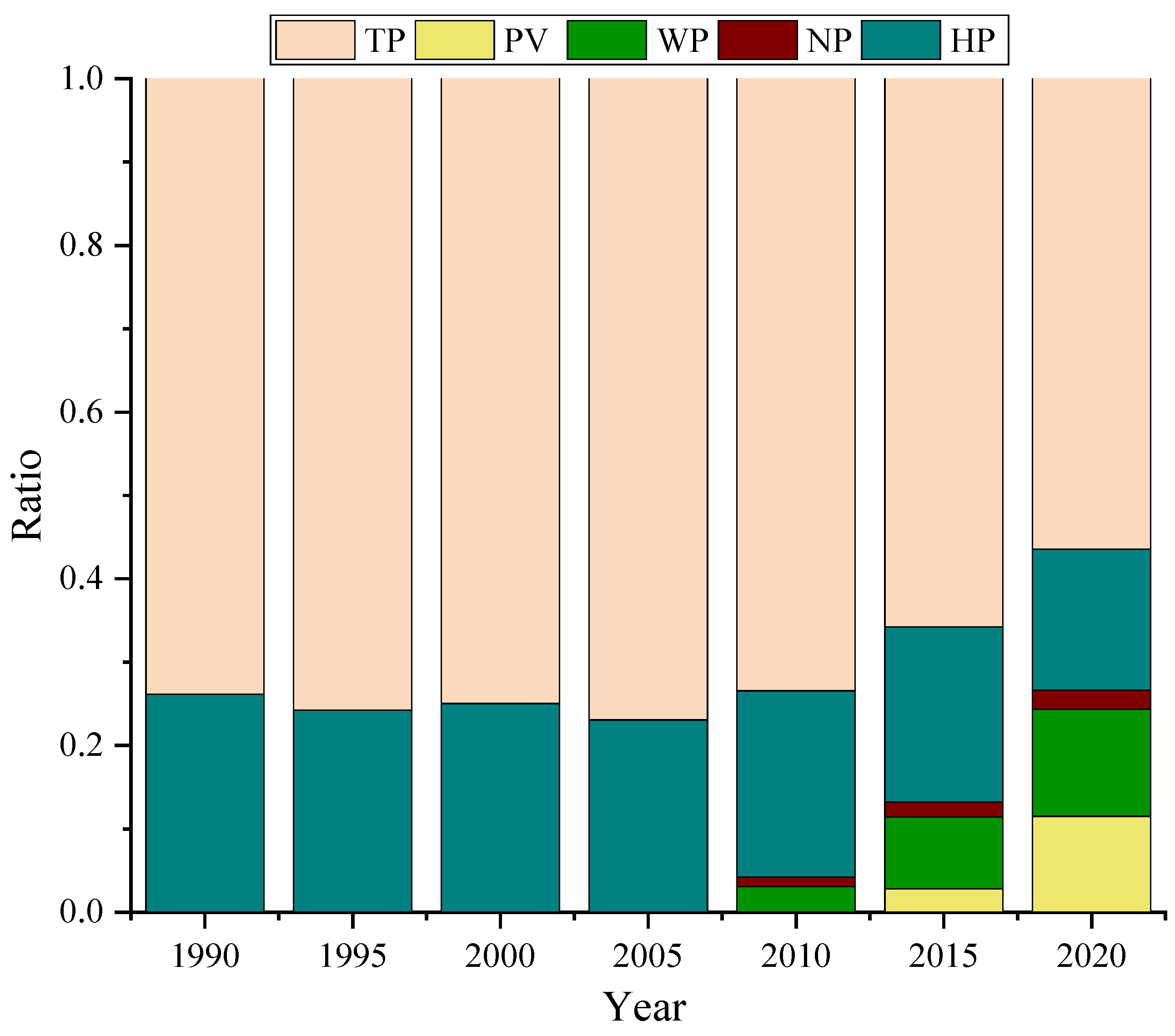
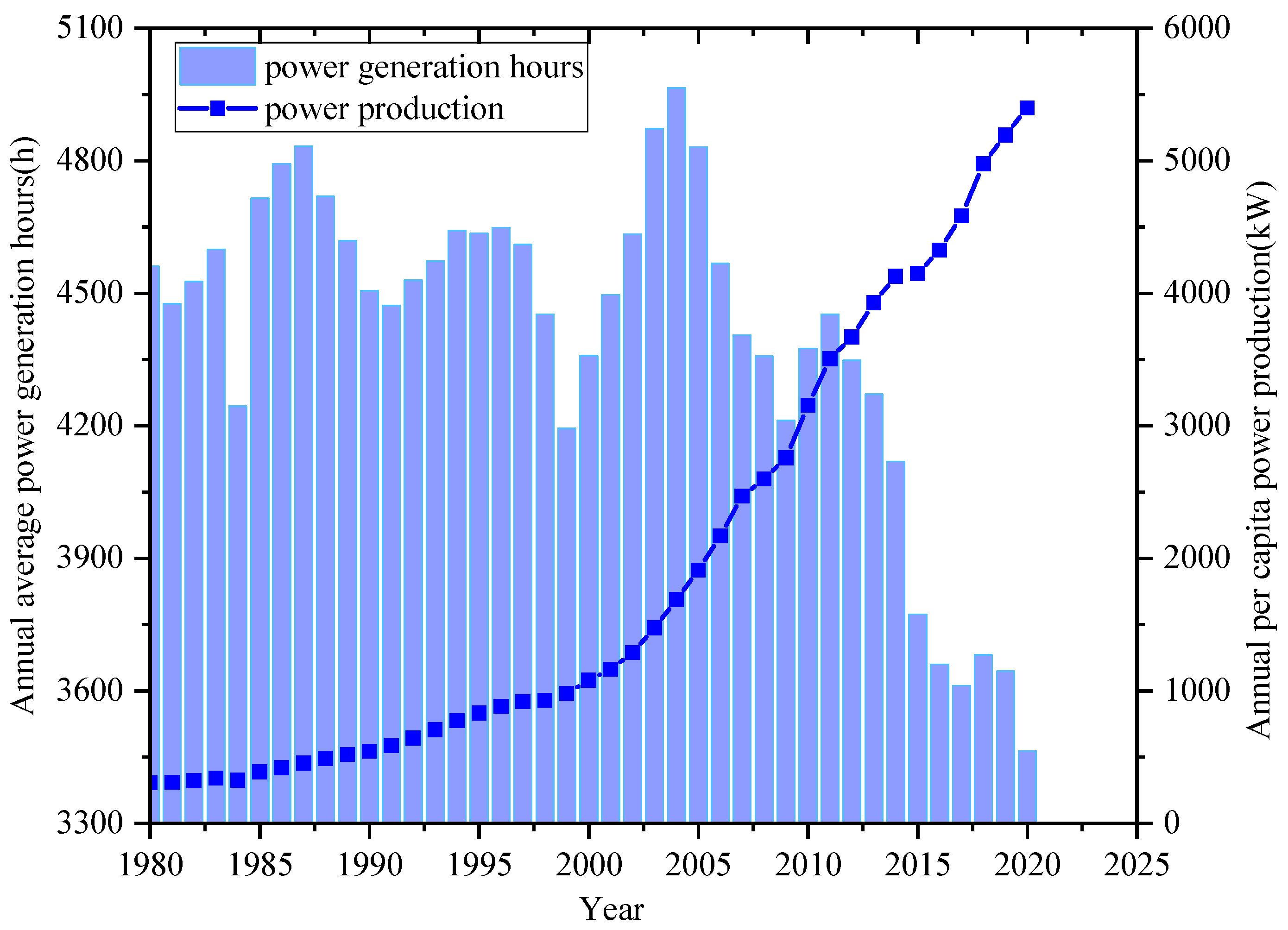

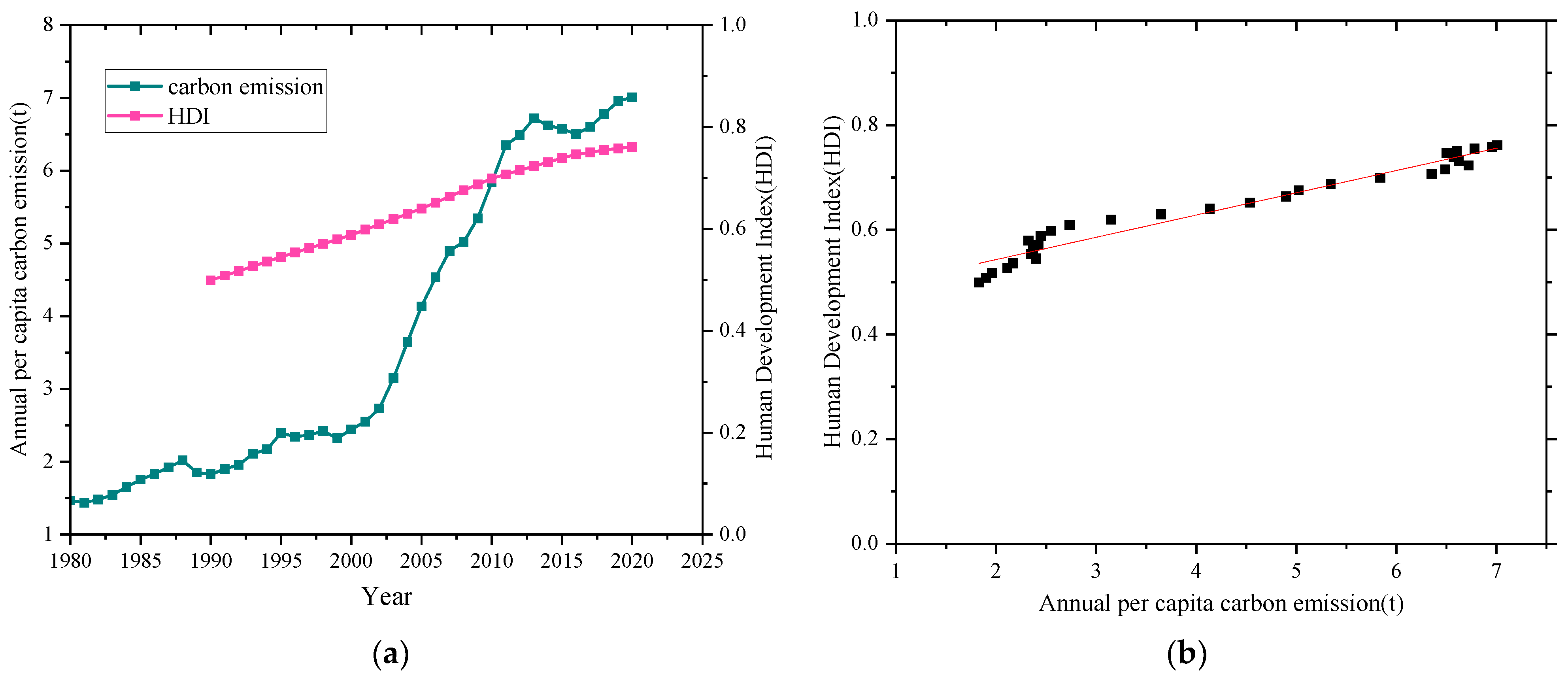
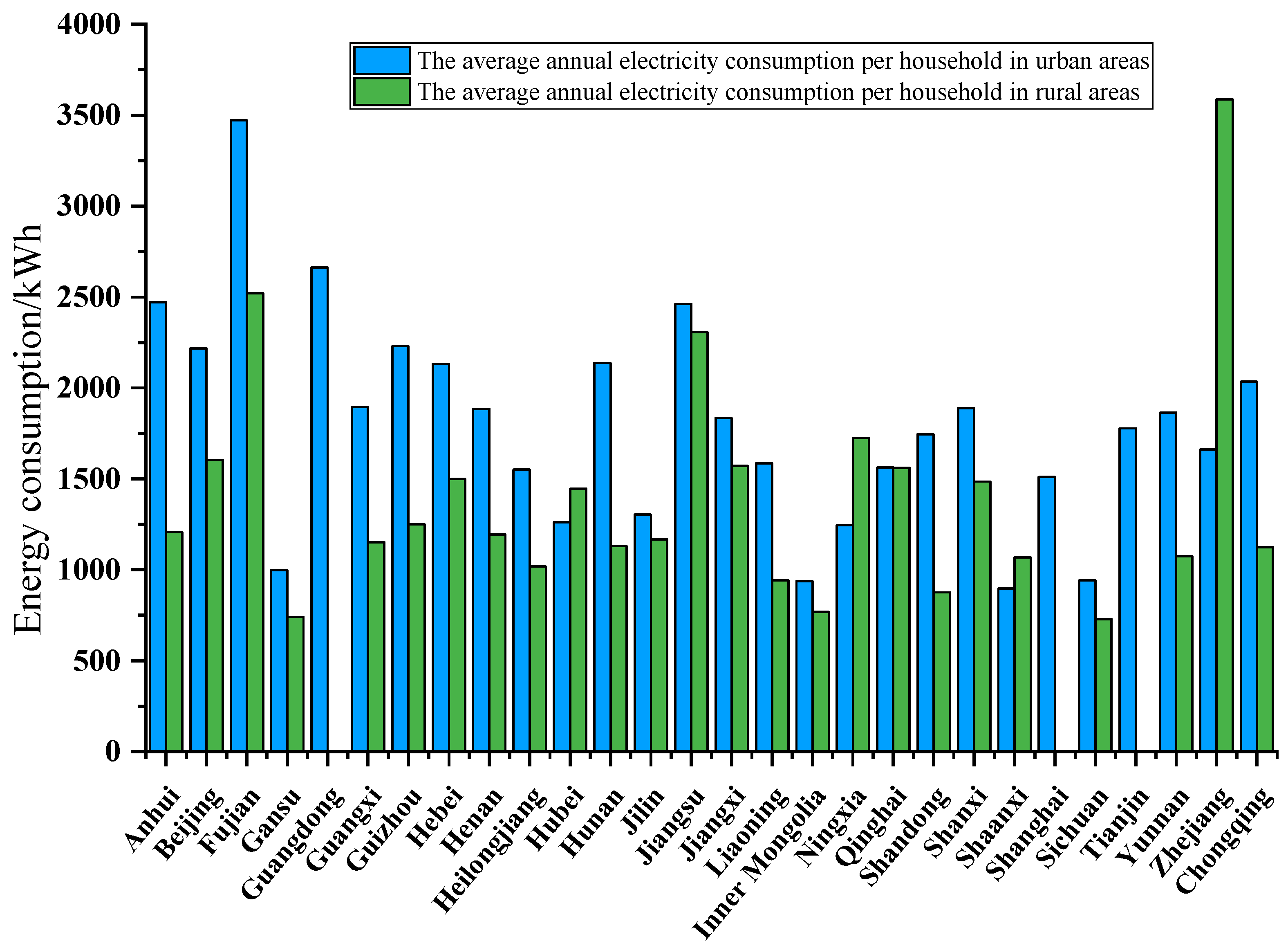

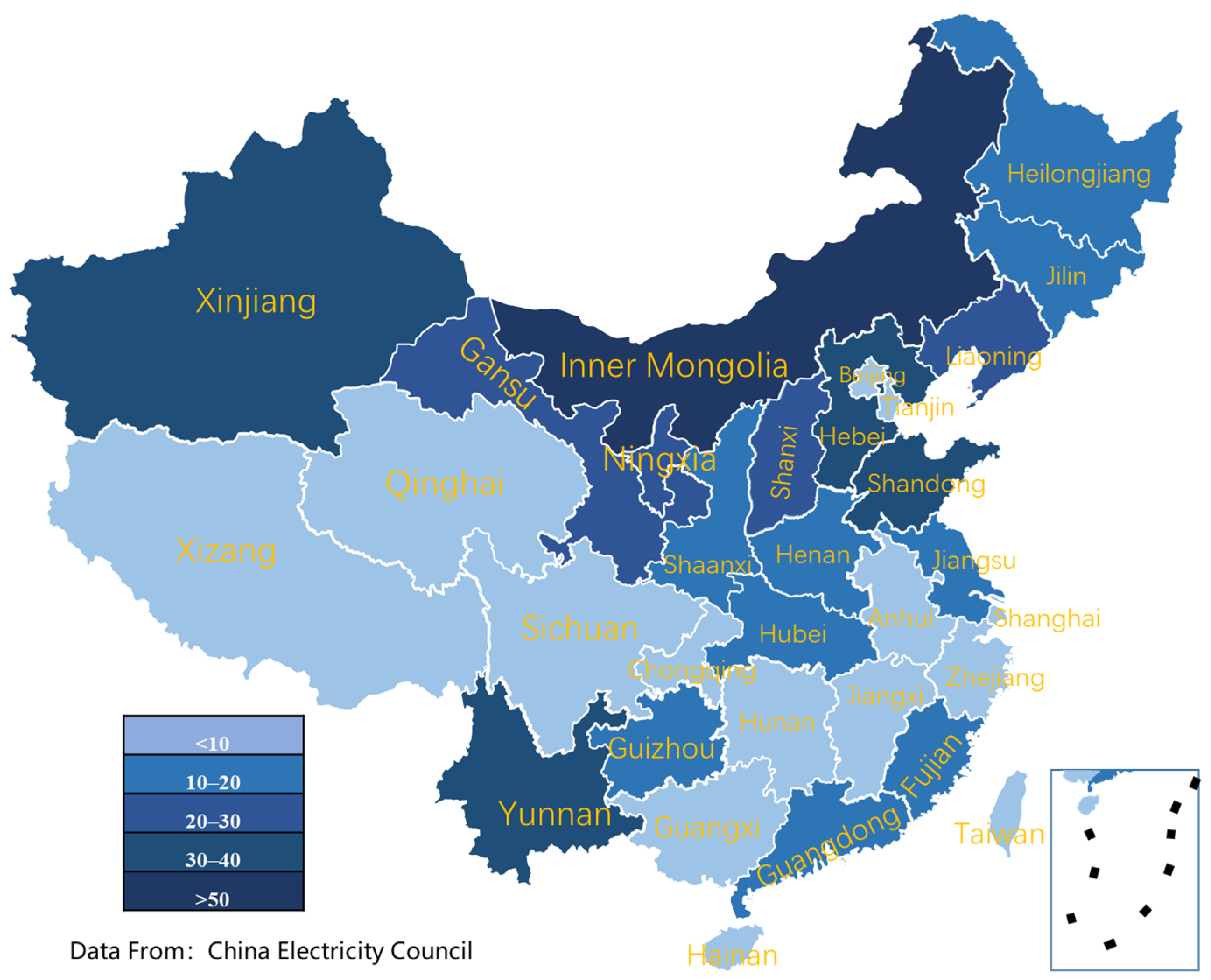


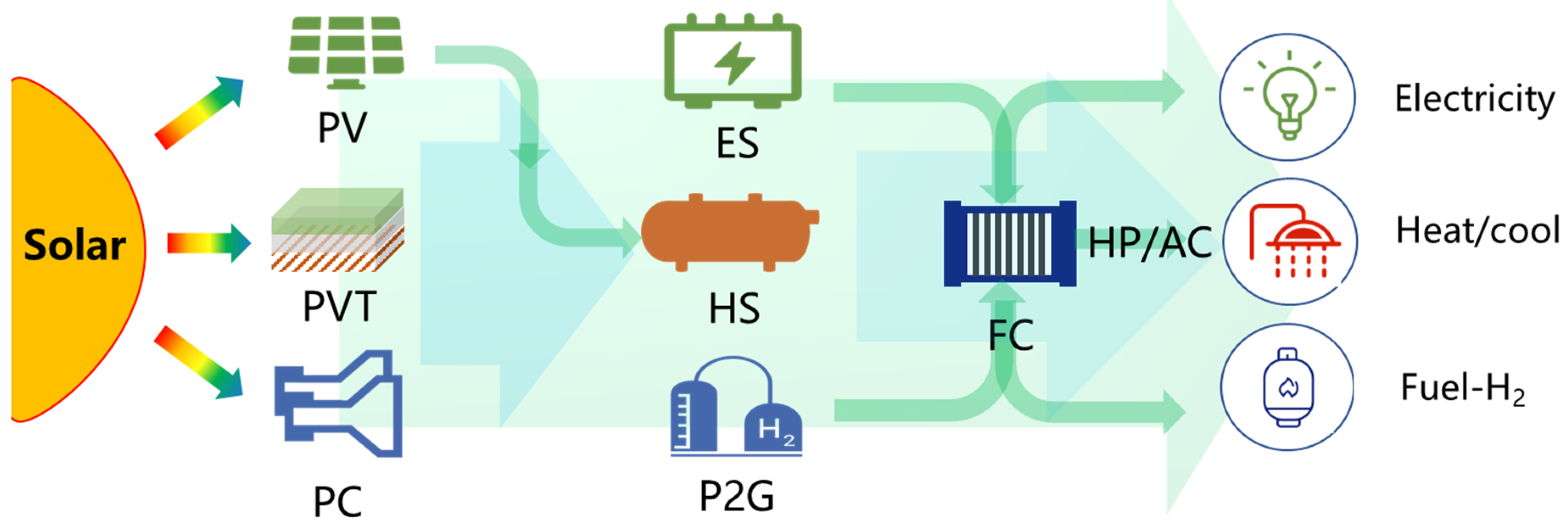
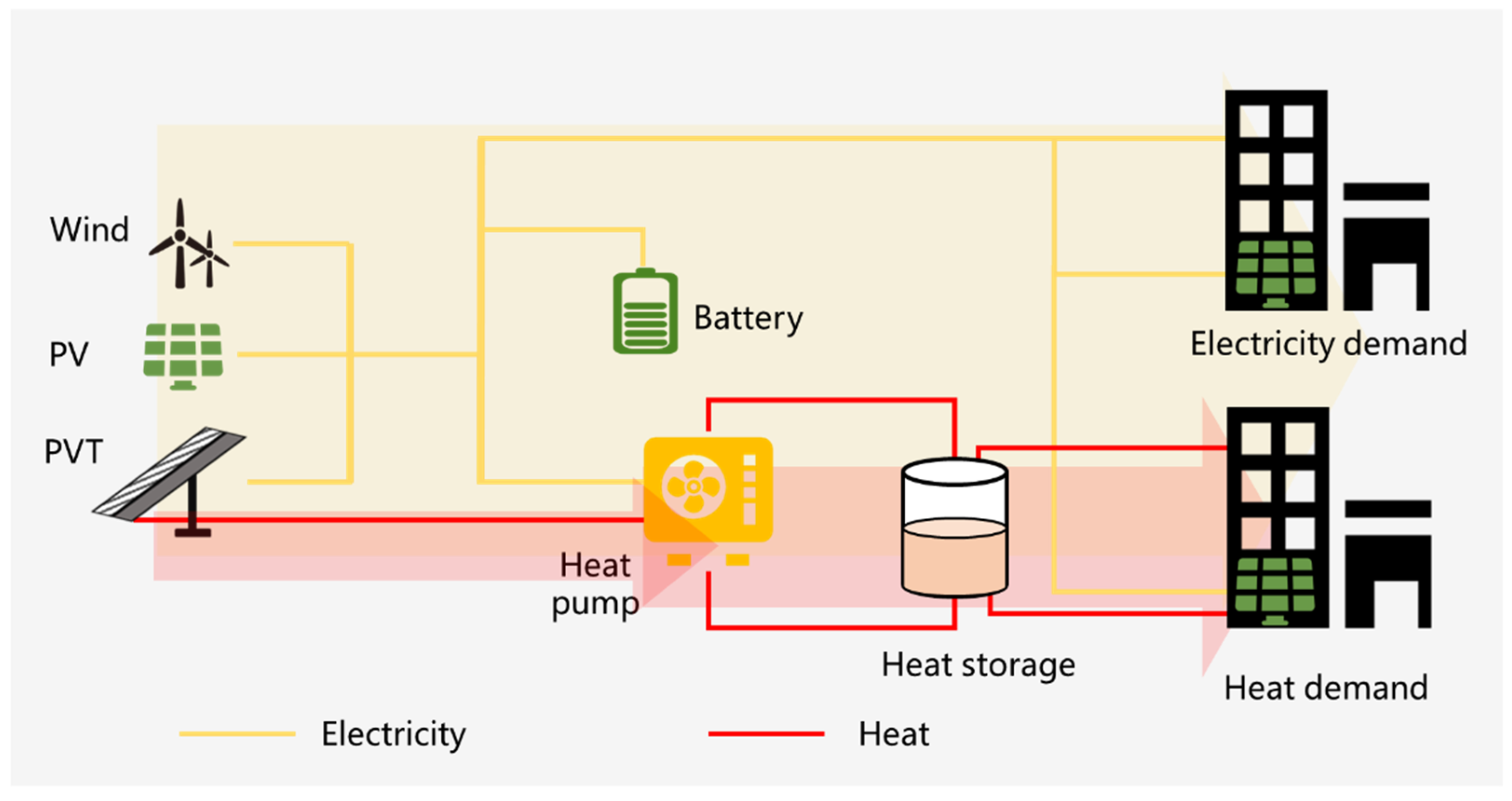
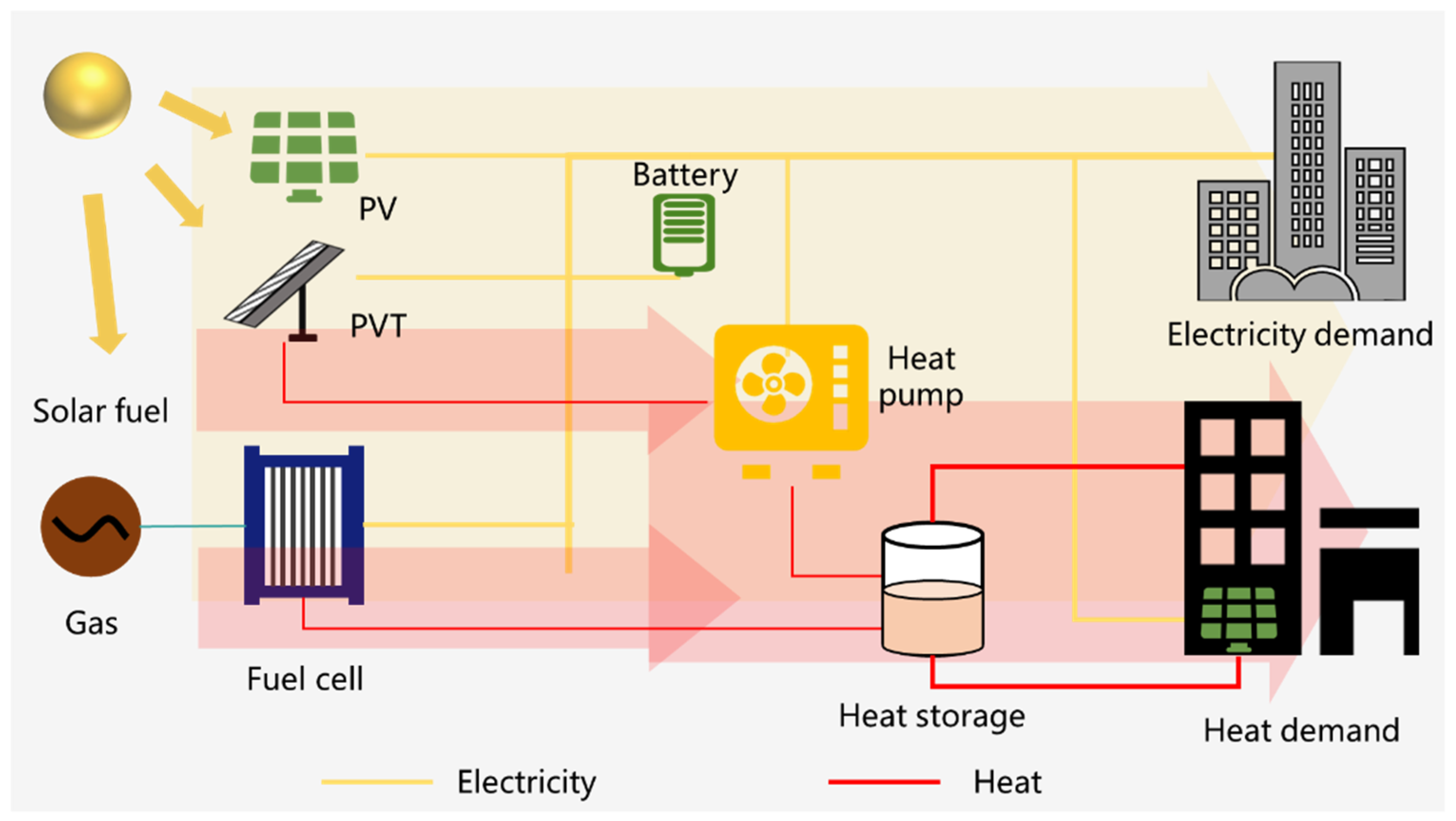
Publisher’s Note: MDPI stays neutral with regard to jurisdictional claims in published maps and institutional affiliations. |
© 2021 by the authors. Licensee MDPI, Basel, Switzerland. This article is an open access article distributed under the terms and conditions of the Creative Commons Attribution (CC BY) license (https://creativecommons.org/licenses/by/4.0/).
Share and Cite
Zhang, Y.; Wang, S.; Shao, W.; Hao, J. Feasible Distributed Energy Supply Options for Household Energy Use in China from a Carbon Neutral Perspective. Int. J. Environ. Res. Public Health 2021, 18, 12992. https://doi.org/10.3390/ijerph182412992
Zhang Y, Wang S, Shao W, Hao J. Feasible Distributed Energy Supply Options for Household Energy Use in China from a Carbon Neutral Perspective. International Journal of Environmental Research and Public Health. 2021; 18(24):12992. https://doi.org/10.3390/ijerph182412992
Chicago/Turabian StyleZhang, Yingxin, Sainan Wang, Wei Shao, and Junhong Hao. 2021. "Feasible Distributed Energy Supply Options for Household Energy Use in China from a Carbon Neutral Perspective" International Journal of Environmental Research and Public Health 18, no. 24: 12992. https://doi.org/10.3390/ijerph182412992
APA StyleZhang, Y., Wang, S., Shao, W., & Hao, J. (2021). Feasible Distributed Energy Supply Options for Household Energy Use in China from a Carbon Neutral Perspective. International Journal of Environmental Research and Public Health, 18(24), 12992. https://doi.org/10.3390/ijerph182412992






